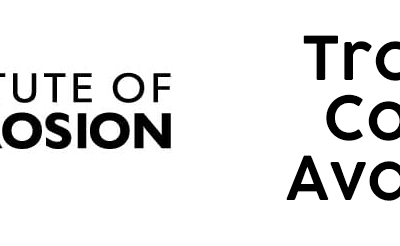This is a new regular column where readers can submit generic (not specific project) questions relating to corrosion protection, to be answered by corrosion experts. This month, the questions relate to zinc rich coatings and the problems of monitoring CP on pipelines affected by induced AC
Question:
Zinc-rich primers are commonly used for the protection of structures exposed to severe environments. The level of zinc dust is classified by the weight of zinc in the dried film, and most standards and specifications require at least > 77% to meet the performance demands. In conventional zinc-rich epoxy primers the high levels of zinc are achieved by adding large amounts of zinc dust particles into an epoxy matrix and the dispersion of this is critical to ensure electrical continuity and hence galvanic protection of steel.
I have heard of zinc epoxy primers on the market with considerably lower zinc levels (as low as 31% by weight). Do these primers still provide good galvanic corrosion protection and maintain good adhesion and mechanical properties of the dried film ? PF
Answer:
Corrosion protection paints using metallic zinc dust as a protective pigment have been used successfully for many decades. Zinc levels in coatings are classified by various standards bodies; common examples being:
• ISO 12944 = “zinc rich” >80% (Zinc dust on dry film)
• BS5493 = “zinc rich” >95% (Zinc dust on weight of pigment)
• BS4652 = “zinc rich” >85% (Zinc metal on dry film)
• SSPC Paint 20 Specification
Type 1 – Inorganic zinc rich paints (Zinc silicates)
Type 2 – Organic zinc rich paints (Epoxy or other organic binders)
• “zinc rich” Level 1, ≥85% (Zinc dust on weight of dry film)
• “zinc rich” Level 2, ≥77% to <85% (Zinc dust on weight of dry film)
• “Reduced zinc” Level 3, ≥65% to <77% (Zinc dust on weight of dry film)
Metallic zinc can protect ferrous substrates via several mechanisms:
• Galvanic protection – Fundamental physical chemistry dictates that if two different metals are in intimate electrical conductive contact, the more reactive metal will form the anode in a corrosion cell and preferentially dissolve to protect the less reactive cathodic species. As zinc sits above mild steel (principal component being iron) in the electrochemical series then metallic zinc in contact with steel will react preferentially, and sacrificially, to protect the steel. In the case of zinc rich primers, the paint is formulated with a very high pigment to binder ratio (close to or even at the critical PVC) such that metallic zinc particles are in intimate contact with each other within the dry film and with the steel substrate at their interface. For a galvanic mechanism to work properly, it is important that the substrate is blast cleaned to a high standard, (typically minimum Sa2½ ISO 8501-1), with enough surface profile to give a good mechanical key. The zinc salts formed as a result of the dissolution of the zinc dust at the anode of the corrosion cell can build up and plug the gap in the coating thereby providing a self-healing effect which can close off the corrosion cell and give a longer-term barrier protection. For true metal-to-metal contact within the coating, typically a level of at least 77% zinc on dry film would be specified. These primers can be designated “Zinc Rich”.
• Barrier effect – On exposure to the atmosphere the zinc metal will react to form zinc salts on a localised basis within the dry film which will plug any porosity within the coating and provide excellent barrier protection.
• Local effect on pH – The zinc salts formed at a corrosion site, in addition to providing a physical barrier to protect the substrate, are inherently alkaline in nature thereby raising the pH at the corrosion site. High pH conditions do not favour the electrochemical corrosion mechanism and therefore the rate of corrosion is suppressed.
Protective primers can be formulated using lower levels of zinc dust than those defined as “zinc rich”. These products must be carefully formulated – as with zinc rich primers these are typically at a high pigment to binder ratio, using a suitable combination of filler pigments so that the zinc dust particles are not totally encapsulated by the binder and therefore still available to react with the external environment. In the case of these reduced zinc primers, there is insufficient zinc to give true galvanic protection or extensive zinc salt formation and plugging of large corrosion cells, as in extremely corrosive environments such as offshore and marine. These products can however provide effective protection in less demanding environments by means of their barrier and pH buffering mechanisms as described above.
There is no official minimum level of zinc in a reduced zinc primer, although the performance levels will need to be carefully assessed to meet the appropriate specification requirements. Very thin film (~15µ dft) inorganic weldable primers are used on a widespread basis in production of steel stock. These will require very low levels of zinc (sometimes around 15%) in order to meet the required low levels of zinc fumes generated by subsequent welding processes. These products are only designed for temporary protection prior to fabrication.
Formulation of an effective zinc rich or reduced zinc primer requires a high degree of effort (or luck!) on the part of the formulator – It is not just a case of putting in a high loading of zinc and hoping for the best. The higher the zinc loading, then various factors such as poor application properties, weak, powdery film, poor adhesion and importantly, higher cost will have to be considered. A good zinc rich or reduced zinc primer will provide the correct balance of performance in the designated environment, good spray characteristics, good film properties, compatibility with subsequent coats of paint, all for an acceptable price – Not an easy task! MM

